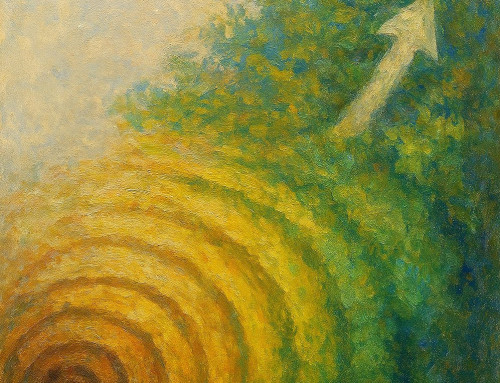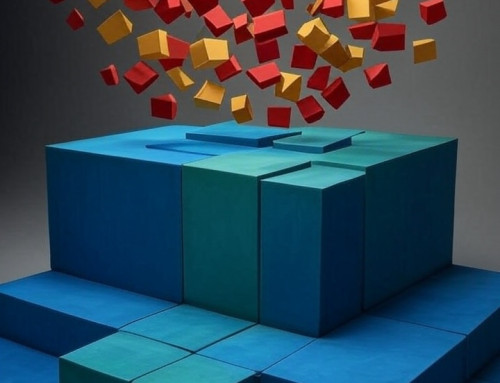Years ago in the mid-nineties, before I started my own school, I was training alongside a student who was very slowly progressing, if not completely stagnant. For myself, I felt like I was making improvements in every class. While training with this student, he was clearly frustrated. I asked him why. His response was that he still wasn’t ready for his next rank testing and couldn’t understand. “I show up to every class! I just can’t learn as fast as everyone else.”
He was halfway correct; he did show up to every class. He also proceeded to take a break every ten seconds to get a drink, go to the bathroom, or just sit out because he was “too tired” or had a sore (input any body part here). I asked him how he trains at home when not in class. He stated the same response I get from a lot of students: “Oh I don’t have enough space or time to train outside of class.” In spite of showing up to multiple classes every week, this student spent about ten total minutes actually training each week. It was no wonder he wasn’t progressing.
I see this error in judgement often unfortunately. While showing up to class regularly is excellent, there is a misperception that showing up alone is all it takes. Even for students that train hard in class but never train outside of class. This sporadic, isolated, training stifles progress immensely unless you are a natural learner/athlete, which most are not. The entire point of martial arts training is to improve your entire life, in and out of the classroom. Why restrict it to just a few hours a week at best?
I was lucky when I first started training. My brother and I trained together. When we lived together, we trained at home. When he moved across town, we met at the dojang during off hours as our instructor was gracious enough to give us a key. Most students don’t have that luxury. But when I state that a student should train at home, I don’t restrict that to running through a form (kata/tul) or throwing and choking a friend or family member to work on material.
What I mean by training outside of the classroom is that one should make use of the skills they are being taught and apply them to everything they do in life. Techniques we learn in martial arts are similar, if not identical, to movements you make in day-to-day life. D you play sports or do any other physical activities? Most of them make use of the same movements we teach in martial arts. I made this connection almost instantly when I started training.
I grew up playing baseball. The motions needed to throw a baseball are nearly identical to throwing a punch. Swinging a baseball bat was the same mechanics as throwing an extension strike, such as a horizontal knife hand, backfist or hammer fist. Sprinting from base to base follows the same explosive mechanics as the foot work we use to initiate a striking combination. I played third base a lot and upon learning a middle stance (horse stance in many arts), I realized I was standing incorrectly while fielding a ball. My stance was too wide. In martial arts, we use wide stances for stability, not mobility. I needed mobility to play third base. By shortening my stance in the field like I did when sparring, I was able to cover more ground and move much faster from a stationary position.
Don’t have any physical activities outside of martial arts? No problem. Some of these may sound weird or funny, but they help dramatically. Standing in front of the microwave waiting for it to ding? Try standing on one leg improve your balance. Need to close a cabinet door? Use your foot to improve your foot and leg dexterity, if not using the exact mechanics as a kick (though slowly, no need to destroy your cabinets). Sitting and reading or watching tv? Sit in a stretch, such as seated straddle, to improve your flexibility. Laying down for bed? Use a proper breakfall technique to help ingrain your falling techniques.
Generally speaking, martial arts techniques teach you how to move efficiently and capitalize on your natural movements. There’s simply no reason not to make use of it outside of the dojang and incorporate it into everything you do. Even simply running through material in your mind when movement is restricted. Think through all of your movements, forms and defenses and focus on details. This not only keeps you thinking about your material, but it also helps you visualize what you are doing.
As I’ve told all my students who need to learn a form for their rank, you must visualize what is actually happening and how you are applying the techniques in your forms. I can tell when a student is doing this or not. It shows in their movements. Simply regurgitating movements that you memorized is not enough. There must be force and intent behind those movements. And if a student can’t visualize these movements, their forms training will always be stagnant.
Watching videos online of your material and reading material sheets are another great way of keeping your mind training, even when your body is not. It can help you reassess your movements and think about what you will adjust when you do get around to physically training. This practice will make your physical training much more efficient as you will have goals and intent behind your training to fix or improve your material.
Another mistake I see students make, primarily youth students, is incorrect training practices. I’ll watch a student’s form and give them one to three things to adjust or focus on. Then I’ll watch them walk off to grab a drink or use the restroom or even go off and work on something completely unrelated to what I just gave them advice on. To no one’s surprise, the form doesn’t improve from the last time I reviewed it as they forgot what to adjust.
When advice is given on material, it’s imperative to immediately work hard on those adjustments. Along these same lines is when I watch a student run through their form or other material without intent on improvement. The student will mindlessly go through their form just to get through it. This not only doesn’t improve anything, but it also negatively effects their training as it reinforces the mistakes.
I repeat the following statement ad nauseum to my youth students, “the end result is the least important part of your training.” “Focus on the process that is taking you to the end result.” Running through a technique or form twenty times doesn’t improve anything if you are only focused on getting to the end. Focus on one element at a time. Focus on the power generation or the speed, or efficiency, or accuracy, etc. Then go back and apply that new improved technique to material that is being worked on.
Much of this advice doesn’t take any time or any space to practice. It makes use of what you are already doing in your day-to-day life and simply makes it more efficient and keeps your mind and/or body focused on improving your curriculum or attributes that help your techniques. But let’s be real for a moment, you DO have time to physically train your material. To state that you can’t find even five minutes in your day to run through a few things is simply untrue. It’s just an excuse.
I don’t mean this to sound rude, but you do have time if it’s important to you. And that’s where it all falls apart for many. It’s just not important enough. If that’s the case, that’s ok. I’m not here to tell people what they should place effort on in their life. Many students take my classes just because they enjoy the class and have no interest in gaining a higher rank or competing or doing anything other than simply enjoying class. There is nothing wrong with that. I state this for students to be honest with themselves and their training so that they don’t get discouraged by not progressing as fast as expected.
Lastly, I want to address a sentiment that I get a lot from adult students. Generally, it’s along the lines of, “I don’t care about rank, I’d rather perfect a couple basic things than seek rank advancement.” The sentiment is perfectly fine. What isn’t fully understood by those that haven’t trained in martial arts, is that the ranking system is kind of important regarding progress with a student’s technique.
We all know it’s not possible to be perfect at anything. We strive for it, but it’s unobtainable. Yet, we get frustrated when we don’t perfect something before moving on. This is where the ranking system helps in most, if not all, martial arts programs. A white belts punch doesn’t need to be perfect, or even great, to move up to the next rank. As an instructor, I’m looking for milestones and improvement. Can the student make a proper fist? Can they align their wrist properly when asked? Do they know the basic mechanics of the punch? Then we are doing well and it’s time to move on.
In his book, The Art of Practice by Liado Dittmar, he makes a strong case that one should train a technique to about ninety percent before advancing to a harder technique. Clarifying that most who struggle with advancing, try too hard to reach one hundred percent before moving on. In my opinion, in martial arts, it can be closer to seventy five percent as we constantly drill the same techniques in every higher rank. But nonetheless, the idea is the same. Train until it’s good enough, then move to something harder knowing that the harder techniques will help boost that previous technique.
If you watch a martial arts class with all levels of students, you’ll see the beginners doing some sloppy techniques but still passing rank testing’s and doing well. Then intermediate ranks will demonstrate more efficiency and power in those same techniques. The advanced ranks will demonstrate extreme proficiency and usefulness without thought in those same techniques. If we didn’t promote until a technique was perfect, everyone would be stuck at white belt.
Bruce Lee famously stated, “I fear not the man who has practiced ten thousand kicks once, but I fear the man who has practiced one kick ten thousand times.” This is true. But that doesn’t mean you never learn nor train those other ten thousand techniques. You use them to help perfect the few you focus on. This is why the ranking system, no matter what kind of ranking system is used, is such a great guide to learning.
Embrace the ranking system, accept perfection is not obtainable, and find excuses TO train rather than NOT to train, especially outside of the classroom. This will heavily impact your training and progress in everything you want to learn, not just martial arts.







You are my intake, I have few blogs and sometimes run out from to post .